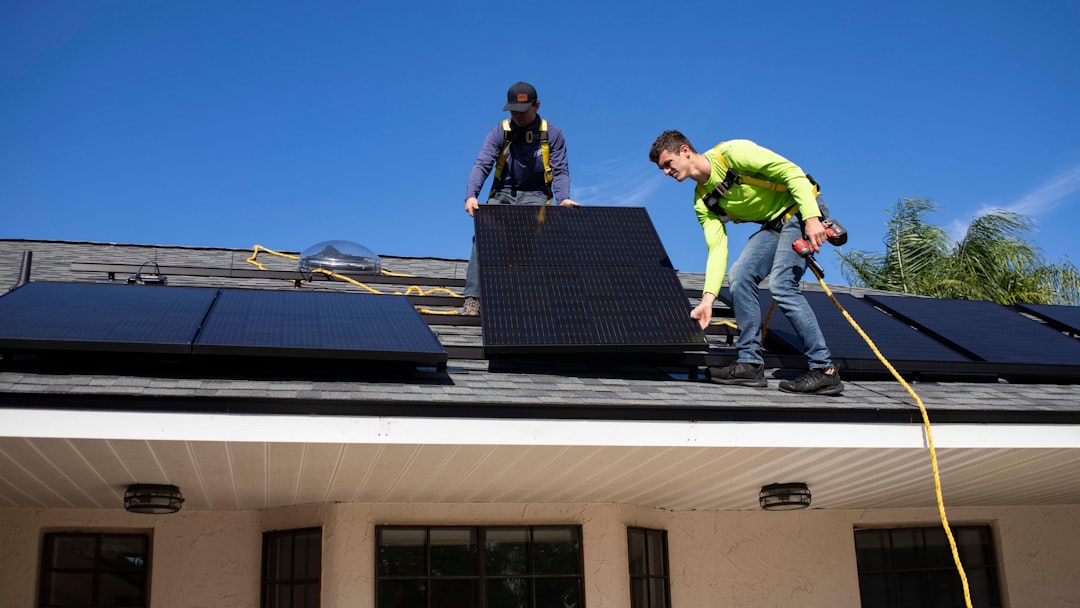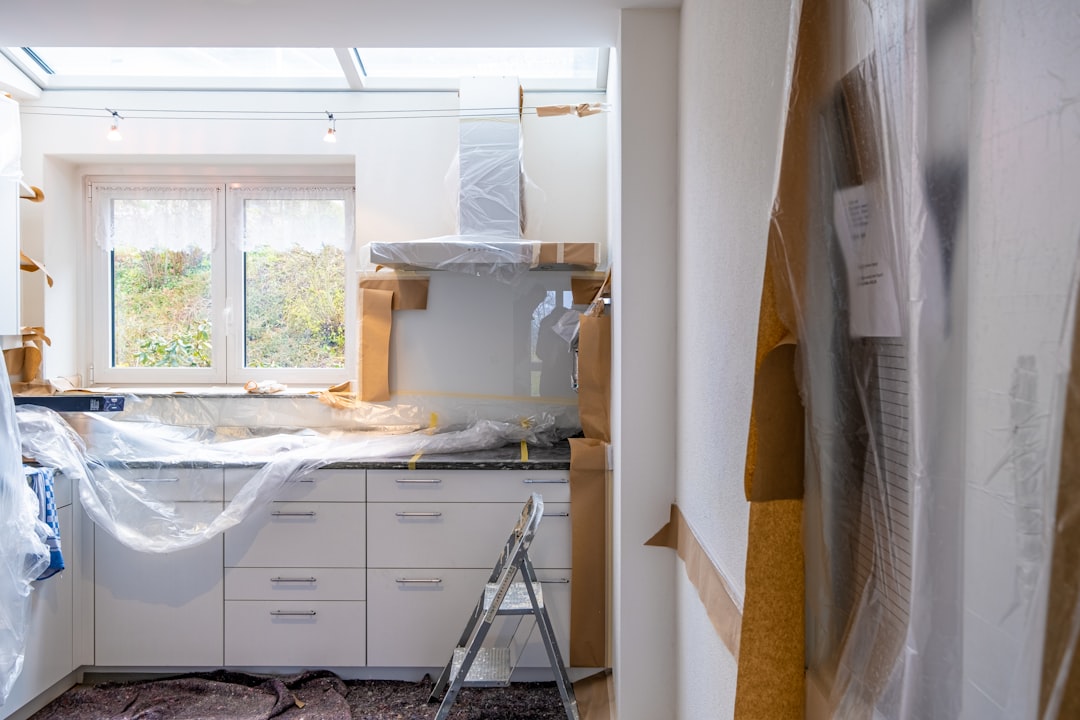Owning a rental property is one of the most significant investments you can have. That’s why you should ensure its protection against weather damage. Climate change is no longer a distant threat. It is currently creating a significant impact on property values.
For example, rising temperatures, storms, and floods create new challenges for landlords. Read this guide, and we will share how to climate-proof your rental and protect your investment by starting with proactive maintenance.
How Do Climate-Ready Homes Improve Property Value and Longevity?
Climate-ready features are gradually becoming one of the essential selling points of properties. Both buyers as well as renters tend to search for properties that are being prepared for the rapid changes in today’s climate.
Extreme weather can also contribute to the rise in utility costs, aside from the rental fee. Hence, climate-proofing the rental property can help tenants save money in the long run. If you want to increase the value of your property, you should go ahead with energy efficiency improvements. They include:
- Solar panels
- Efficient HVAC systems
- Smart thermostats and many more
Water management systems can add value to your home as well. For example, French drains, rain gardens, and proper grading can provide added protection against flooding. They show potential buyers that you’ve thought ahead and reduce their perceived risk of future damage.
Investing in durable materials can help you start climate-proofing your rental and possibly extend your property’s lifespan significantly. Impact-resistant roofing lasts 50 years instead of 20. Fiber cement siding withstands moisture and heat better than vinyl. These materials cost more initially, but they eliminate frequent replacements and repairs.
Renters and homebuyers are becoming increasingly aware of climate change and the risks that come with it. Properties that are equipped for storm-resistant roofing, and proper drainage systems show that the property owner takes a proactive approach to risk management.
These features also allow higher rental demand to justify competitive rental rates. Traditional homes usually need additional protection against heavy rainfall, high humidity, and roof leaks. These problems can cause an increase in the emergency repair expenses. While other properties prepared with durable exterior materials, improved ventilation, and quality impact-resistant windows can allow a more predictable maintenance budget and consistent cash flow for landlords.
You should also consider the cumulative effect of climate stress on the buildings. For example, extreme temperature swings can cause expansion and contraction. This can weaken structural components over time. Climate proofing can help you reduce this deterioration significantly.
Green spaces around your property serve multiple purposes. Trees provide shade, reducing cooling costs by up to 25%. They also absorb rainwater and filter air. Native plants require less maintenance and water. They create an attractive, sustainable landscape.

Financial Benefits of Preventive Maintenance vs. Climate Damage Costs
Think about the last time you had to pay for emergency repairs at your home. Now imagine having to deal with even higher costs like that due to extreme weather events. Climate-related damage is expensive, which is why preventive maintenance can help prevent this.
You can take flood prevention as an example. To install a drainage system, you will have to spend around $3,000 upfront. However, a major flood can cause around $20,000 in damage. This doesn’t include the lost rental income you will have to deal with during the repair period.
Energy-efficient upgrades work the same way. New insulation costs around $2,500 for an average home. It cuts heating and cooling costs by 20-30% annually, which means lower utility bills for you or your tenants.
Storm-resistant features can offer similar savings to you. For example, reinforced windows and doors can prevent wind damage. They cost about $5,000 to install. On the other hand, replacing broken windows and water-damaged interiors after a storm runs much higher. You could spend $15,000 or more on emergency repairs.
Preventive maintenance is capable of reducing tenancy rates as well. Properties that are located in high-risk zones typically face rising insurance premiums, but if they have climate-ready features, this may qualify property owners to reduced insurance costs. A well-maintained property with modern climate features, with improved energy-efficient upgrades, attracts quality renters.
Tenants prefer to live in reliable and comfortable homes, which is why they’re willing to pay premium rent for peace of mind. This reassures them that their landlord is proactive and concerned about their safety and comfort. On top of that, they tend to stay longer, reducing turnover costs. Discuss with a local rental manager on how to further educate tenants on preparedness with our shifting climate.
This not only enhances the tenant experience, but also positions the property management team as a responsible rental housing provider. While on the other hand, landlords who plan ahead and adapt to climate change have a competitive edge in attracting long-term tenants. It also allows the rental property to thrive in the market, ensuring a more secure and profitable rental investment.
The Role of Professional Property Managers in Long-Term Sustainability Planning
Conducting Climate Assessments
Conducting Climate Assessments
Good property managers conduct climate risk assessments. They identify vulnerabilities specific to your property’s location. Is flooding a concern? What about wildfires or extreme heat? They develop customized adaptation plans based on real data.
These assessments go beyond surface-level observations. Professional managers analyze historical weather patterns, review flood maps, and evaluate your property’s elevation and drainage capabilities.
They examine the condition of existing infrastructure, from foundation integrity to roof age, identifying which components are most susceptible to climate stress. This comprehensive evaluation helps prioritize which improvements will deliver the greatest protection for your investment.
They also stay current with building codes and regulations. Climate-related requirements are changing rapidly. Professional managers ensure your properties meet new standards.
This prevents costly violations and forced upgrades later. Many municipalities now require specific storm-resistant features or energy efficiency benchmarks for rental properties. Professional managers track these evolving requirements and help you stay ahead of compliance deadlines, avoiding penalties while maintaining your property’s marketability.
Scheduling Maintenance Requests
Maintenance scheduling becomes strategic with professional management. They don’t just fix things when they break. They implement preventive maintenance schedules focused on climate resilience. This includes regular roof inspections before storm season, preparing HVAC systems before summer heat waves.
Property managers have vendor networks you can leverage. They work with contractors who specialize in climate adaptations. These professionals install proper insulation, storm shutters, and drainage systems correctly. Quality installation matters for long-term effectiveness.

Budget Planning
Budget planning improves with professional management. Property managers help you prioritize climate upgrades by providing data-driven recommendations that can help you weigh the risks and returns. They help you prioritize climate upgrades based on risk and return. Should you invest in solar panels first or improve drainage?
Property managers can help you with insurance as well. For example, documentation is essential to proceed with insurance claims. This is why property managers maintain detailed records of all climate adaptations. They document preventive maintenance and upgrade costs. This information proves valuable when selling or refinancing.
Educating the Tenants
Tenant education is another valuable service. Property managers can teach renters about energy efficiency and extreme weather preparation. If the rental property is already equipped with smart thermostats and other fixtures that could help with climate adaptation, it’s important to take the time to guide tenants on how to use these features correctly. For example, tenants who know how to regulate internal temperatures efficiently or spot early signs of moisture can help significantly reduce the unnecessary wear and tear.
Emergency response planning becomes systematic when detailed protocols for various climate events are provided. They coordinate with tenants before hurricanes, floods, or heat waves, which helps to minimize the damage while keeping everyone safe. Property managers can also send in reminders to maintain the property against seasonal weather risks.
When tenants understand the value behind these features, they tend to appreciate the property more and are willing to contribute to its upkeep. From a property management standpoint, high tenant retention reduces turnover costs, and prevent losses from vacancy. This also helps strengthen tenant relations, and ensure that the benefits of energy efficiency are maximized far beyond the structural improvements.

Final Words
As you can see, climate change presents real challenges for property owners. However, it can create many opportunities for smart investors as well. Properties that come along with climate adaptations will outperform others in the upcoming years.
Climate-ready homes can increase property value while protecting the investment for the long run. This strategic upgrade is a smart financial and operational decision, especially when property owners and managers focus on high-risk areas.
Tenants also play a role here since they are encouraged to promptly report any early warning signs that they can find in the property, including signs of moisture, unusual energy spikes, or minor cracking after a heavy storm. Along with that, work with professional property managers who understand sustainability and develop a comprehensive climate adaptation strategy and implement it in your rental property.
Frequently Asked Questions
What does “climate-proofing” a rental property actually mean?
Climate-proofing involves being proactive on the possible structural changes of your property to increase its resilience against weather-related risks. This includes dealing with extreme heat, storms, and floods. Doing this step can protect your investment by reducing future damage and improving longevity. You can read the main article for a full guide on proactive maintenance.
How do climate-ready features increase my property’s value?
Additional features such as solar panels and water management systems lower risk and reduce utility costs for tenants. Some renters are willing to pay a premium rent, which directly increases your property’s overall market value. We have a section in this article that entails which specific features can boost property value.
Are climate-proofed homes only about avoiding damage?
Doing this step not only covers avoiding damage but also brings in significant financial benefits. You can save money through lower utility bills, and investing in durable materials means fewer repair costs and an extended property lifespan. You can read more about this in the section on financial benefits.
References
US Real Estate: 5 Ways Climate-Proof Your Home
Megaphone.org: Climate-proof your homes: Energy efficiency standards for rentals NOW
CBRE.com: How Property Management is Building Resilience to Climate Risk





